Responding to a parliamentary question from Neil Shastri-Hurst, MP for Solihull West and Shirley, the Ministry of Defence reiterated the significance of the UK’s defence industry, both in safeguarding national security and contributing to economic growth.
Luke Pollard, Parliamentary Under-Secretary of State for Defence, highlighted that defence spending helps sustain around 434,000 jobs across the UK, with about 239,000 of these being supported by the industry itself.
Pollard noted the government’s commitment to prioritising personnel in the upcoming Strategic Defence Review, stating that the review will ensure that the workforce remains central to future defence operations. The government also announced plans to launch a Defence Industrial Strategy that will align national security with economic priorities, bolstering job growth and resilience throughout the country.
Pollard further outlined the role of industry partners in this broader vision, saying, “Our industry partners, of all sizes, are very much at the heart of our One Defence approach.” This initiative aims to strengthen the defence sector while ensuring that it contributes to the prosperity and resilience of the UK economy, reflecting the government’s integrated approach to security and economic development.


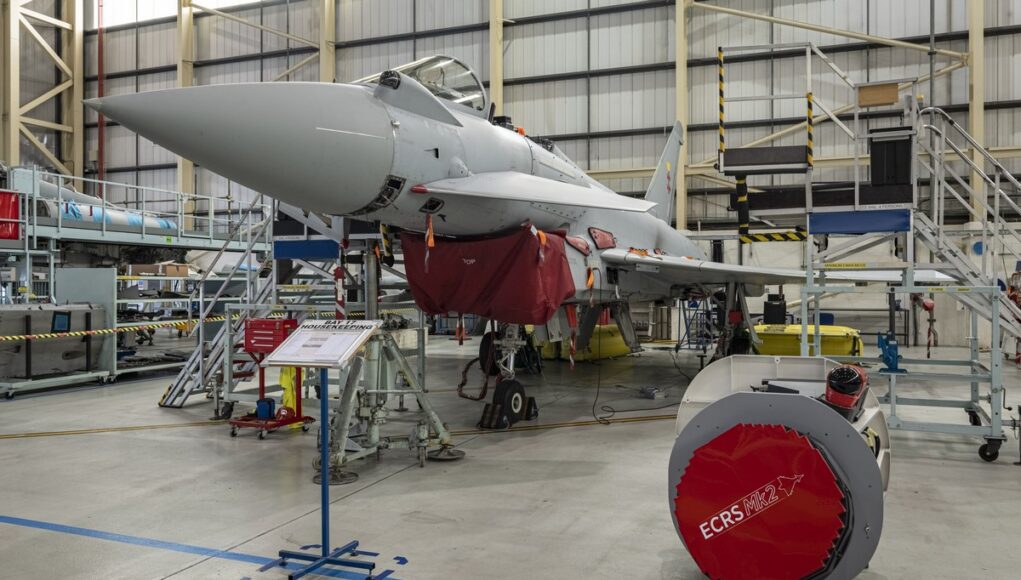

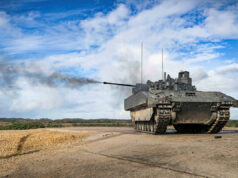
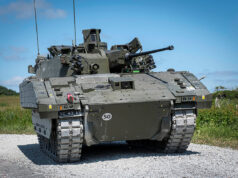


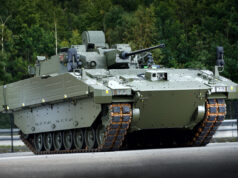
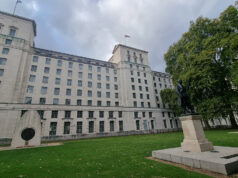


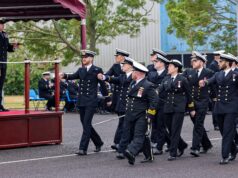

Hmm, there is a lot of positive noise around defence at the moment. I am wondering where the axe will fall – numbers would be my guess – again.
Having said that a Defence Industrial Strategy is definitely needed. Lets be optimistic for a moment. Two assumptions; the squeeze is a short term blib and the country starts something of a recovery, and the government wakes up to the very real threat from Russia and Co.. (Big assumptions I know.)
Yesterday’s news that the North Korea is sending troops to Russia to support / fight in Russia’s invasion of Ukraine fits my concerns about how the Russia, North Korea, Iran, China grouping might evolve from a very loose cooperative into a collaborative active support group, I won’t say alliance because I don’t think their is enough trust for an alliance – more a pact or axis… Russia and North Korea have moved quickly because it is in their interest to do so. It will be interesting to see how Iran and China react as the situation develops.
The other issue is how will this grouping react to Iran getting a good hard kicking from Israel? Iran supplies drones to Russia might be nice if the factory was on Israel’s target list, would be mutually beneficial to the West and Israel but it might plus this evolving grouping closer together.
So the geopolitical situation is definitely going in the wrong direction at the moment with increasing risks every which you look. A Defence Industrial Strategy would at least provide an opportunity to check the continuing decay of our position which is pretty dire within the global context. That would be good sound first step to actually recapitalising our defence capability which we urgently need to do.
Deterrence is far far cheaper than fighting a large scale war. Peacetime defence spending of even 5% of GDP is a tenth of the value of the 52% of GDP peak spending during World War 2.
Cheers CR
Yes some positives which I was hopeful from this Labour government , that the Unions who hold big influence on Labour Party might encourage a better domestic defense industry safeguarding jobs . I really cannot see how any uk govt can cut defence spending at the moment if they are a serious govt in the national interest. We are not even spending 2.5 percent gdp at moment. I can see lots of savings from within the MOD beauracracy, I mean is there really 65000 people working for the MOD ?, and general military purchases .I think There is a lot if waste in spending and plenty of opportunity to think out side the box to try and increase numbers in all services from full time in the navy for example to a more ready reserve units in the army . In general the waste in government spending accross all departments is just obscene and often corrupt . It might be because I’ve only just noticed it but there seems to be a lot of privatisation going on within the military which generally I do not see as a positive .
Who would have thought 5 years ago that North Korean soldiers would be fighting in Europe , who I may add will have the backing from China and would not surprise me that China will use the North Koreans as a cover to get some battle experience with chinese soldiers quietly inserted into the mix . Really should be a wake up call to all of Europe
I hadn’t considered the possibility of China sending ‘a few’ troops along side the North Koreans. A chilling thought, although if they do I suspect it would be as observers / advisers rather then as combat troops, under cover or otherwise would be too much of a risk I would think.
China has it’s own agenda and I don’t think getting mixed up in a European war is on the to do list. Learning from it might be, hence observers. Nevertheless, your point about China backing the move is a good one or perhaps they simply didn’t object. Either way it is a significant shift from sending technology to Russia or political support as it suggests that China is taking sides and wants to see Russia win.
NATO will be ‘concerned’ to say the least. Depends on how Europe (including the UK) responds.
Cheers CR
While buying British and supporting our defence industry for a myriad of good economic reasons is obviously good, we need to be cautious of spending scarce defence funding on job creation schemes.
We end up with helicopters like the Wildcat, when that happens.
The strategy ( warships aside) should be to look at buying British first, but only backing the UK opinion if a good business case can be made, i.e, is it exportable??
If a UK procurement is being ‘politically forced’ purely because of the jobs aspect, then a proportional amount should come from the Department of Trade and industry and not the defence budget.
I would suggest, the difference between the UK option and an off the shelf solution.
I agree that forcing UK purchases is a mistake.
Buuuuut the UK R&D has actually being building since Tony Blair was told no to UKFMS by Washington and ITAR and the de-ITAR of numerous products.
The lazy assumption that US tech is always best even if it is 4x the cost has to buried.
US is best attitude seems to be deeply engrained in some quarters. I heard it quite a few times when I worked for MoD. Always seemed so short sighted to me. We need to be able to bring something to the table if we are to be considered worthy of any kind of influence. Otherwise we become a mere client state…
One thing that many fail to grasp is that we quite often bring a key element or piece of the puzzle that can turn out be be very well appreciated across the water. Keep doing that and the Americans can be very generous, fortunately for us. So we need to invest in our industries and people to maintain that relationship and to contribute to NATO’s collective defence – not to mention grow our economy and improve our own living standards. It is not rocket science, but nor is it easy to achieve in the context of so many vested interests.
Cheers CR
Interesting. I never heard the expresson that ‘US is best’ when I was serving. How is that demonstrated? We buy relatively little US kit, surely? No ships or submarines. No AFVs (Ajax is made by a Welsh company, albeit with a US parent) or trucks. No tube artillery. Typhoon and A400M is European and F-35 is multinational, albeit US-led.
You make it sound as if we produce relatively little defence kit. I think the vast majority of the UK’s military kit is British built, mostly by British-owned companies. We have always been a major defence exporter.
I understand that, it is just that some seemed to think that we should buy US kit as it was better! I got the impression that the grass was always better on the other side of the fence for some people. It was not universal by any means but it complicated things and led to discussions rather than decisions…
I agree that we have been a major defence exporter but that has been shrinking especially on the land systems side. However, more recently things have been picking up significantly and I don’t think it is a coincidence that we have sold two frigate classes to allied and friendly countries just as the Royal Navy is rebuilding its’ frigate fleet.
Confidence in ourselves breeds confidence in our friends and allies.
Cheers CR
Thanks CR. In the land area, if anything there were those who favoured us buying German Leopard tanks (Lt Col Crawford being one!) and perhaps Gepards in the 90s and Swedish CV90s more recently. But I never heard anyone in the army advocating for purchase of US land equipment, excepting for MLRS. [We did of course buy US-origin PM vehicles for the Afghanistan campaign as they were immediately available for UOR procurement].
We have certainly slipped as a defence exporter in recent years but are still in the top half dozen.
I think people often use Apache as the example where we manufacturer a UK version but spent way more for slightly better attack helicopter. And we’ve made cockups like selecting completely the wrong airframe for the MRA4 which lead people to believe buying British is to expensive and trouble some, which isn’t the case.
We need to be pragmatic, if we have a competitive product MoD should buy it. If we don’t have a competitive design but we can make under license at a competitive price we should. Otherwise buy off the shelf.
Umm…wish to mention E-7, P-8A.
Hi SB, I’ve always found that attitude quite baffling, historically other than mass I struggle to think of that many weapon systems that were best in class.
Certainly for land warfare they tend to just keep on developing the same systems to the nth degree even when the fundamental core of the design is past its optimum. M109 is a classic example, they just kept on developing it even when others stopped buying it and replaced them.
Much as I love U.K industry, I do think we need to develop a more European wide approach to development and purchasing.
Main problem is the one European country that just doesn’t play nicely and never will (hint they don’t like getting off trains at Waterloo station).
I actually think we get on best without German and French involvement, so for me expanding on the Nordic partnership would be a good way to go.
Even the latest M109s only have a 39-cal barrel. I am amazed it still sells well.
Maybe we should of kept ours ?
M1 is clearly a better tank overall than Challenger 2 despite thee later being younger. F-15 and F16 originated in 70’s there was nothing comparable until EFA.
Not to sure M1 better than CH2 it’s not always down to what’s said on paper 😏
You seem to be talking about early or original M1s, as you reference the fielding date?
In what way are the older M1s a better tank than CR2? Early M1s are inferior in nearly every way:
-Many, many M1s have been destroyed or were so severely damaged in combat they had to be recovered back to the US, in many conflicts.
-Until the Ukraine war, no CR2 had been lost in combat. UKR has only lost 1 or 2 of theirs. It was said that UKR had withdrawn M1 from front-line duties.
-M1 has a horrendous fuel consumption.
-M1s are exceptionally high maintenance.
-Early M1s lacked a GUE (Aux Engine) so could not do silent watch without running up a 1500 gas turbine.
-Suspension is primitive compared to Chally, so crew comfort is compromised.
-The record for longest tank kill is held by a Chally not M1.
[I think early M1s did not even have a BV!!].
I would also add that the early M1’s still had the 105mm rifled gun. I remember reading about the NATO gunnery competition and an American talking about turning up with their teeny tweeny 105 guns against the European tanks with their 120mm guns…
Cheers CR
M1 better than Challenger:
Protection. blast panels in turret for ammunition.
As being seen in Ukraine, tactical considerations make troops put HESH rounds elsewhere because reload would be otherwise too slow, result Challenger turret going up like a T72.
Sights : independent sights for commander. Challenger 2 do not have that.
Gun: many type of rounds, while Challenger was limited to penetrators and HESH and at developmental end.
Inferior: fuel consumption, the M1 engine is gas guzzling.
———-
It is irrelevant the absolute losses, if one tank have 10000 engagements and another have 100 obviously the one with 100 will have less losses.
———-
We can see that Challenger 3 evolution moved in to several M1 decisions done almost 40 years ago: ammo with blast panels in turret, same gun that could be evolved. 360º independent sight for commander.
Mmm
has a CR2 turret been penetrated,
where is your evidence that hesh is being discarded when it is perfectly capable of taking out IFV,APCs and even older Russian tanks,
any evidence of the ONE turret flying through the air,
sights could be better but are still capable,
the gun is a proven design but rightly being replaced on CR3 for ammo commonality.
whenever CR2 and M1 have been on the same operations (Iraq) CR 2 has had no losses to enemy action unlike M1.
However M1s are being remanufactured to latest standard, albeit at too slow a rate, given current threat environment.
Correct and we are updating to CR3 but not enough of them!
Absolutely , I know Boxer deal is done but I would hope there’s someway we can get out of this 155mm Artillery Boxer platform has sure it was a Sunak deal 🙄 and do the Army really want this platform ? has other options are available. 🤔
The Scandinavian nations including Finland have just agreed in principle to develop the next generation of ifv vehicles etc together so all armies in Scandinavian arena using same hardware, so a possible new avenue their for UK to pursue with some excellent Scandinavian nations who make good kit such as the cv90 which is BAE owned and Finnish Patria vehicles
The problem is UK jobs doesn’t mean UK designs, Unions have nearly always focus on blue collar jobs and I can.never recall a union complaining because RnD was cut, if fact demands without considering the predicament of the company at times have caused RnD cuts. RnD tax cuts are already cut and we couldcsee further reductions. Foreign designs can be made here so supporting jobs isn’t necessarily end to end support of the defence industry.
Surely the Wildcat met the Staff Requirements drawn up by appropriate service personnel?
So you might think Graham, but the evidence would suggest otherwise…
If the design was put before me, I would have the following questions.
Naval variant: Looks capable on paper, but what makes it better than say a new production mk8, i.e an updated Super Lynx??
Army variant: Totally lost for words…
It’s an ‘extremely’ expensive light utility helicopter, with far less utility than the helicopter it’s replacing!?!
Export potential, virtually none…
From me it would have been a resounding NO, try again.
It’s an example of very poor DTI led, politically forced procurement.
One can only assume the nodding dog senior officers who signed it off were more concerned with pensions and lucrative future non executive positions on the Leonardo board.
Boom. And it will continue. HMG favour jobs over defence capability in the numbers required.
Quite right mate. It’s how we seem to get so little for our money.
Thanks John. Something clearly went wrong with setting the Requirements then. You usually ask for more capability than you had before!
Afternoon Graham, unfortunately, the Requirement has to clear the political hoop.
Generally speaking, political interference can make things late and more expensive, in this case however Wildcat was an obscene waste of tax payers money.
It became a horrendously expensive, niche helicopter that will never sell in numbers that will show a return on the investment.
It will never even reach 100 airframes.
Thanks to crash worthy seating, the utility Wildcat can only carry four equipped troops, it carries no armament bar two door gunners.
It carries no specific scouting equipment either.
So it’s job in the Army is ???? Answers on a postcard😂
I’m going to say officers taxi service…
The Naval Wildcat is an excellent platform, but so was the Lynx, why not simply build a new Super Lynx variant, based on an upgraded and updated Lynx HMA8.
It would have been substantially cheaper.
If it ain’t broken, don’t fix it!!
The Army could have bought a much cheaper off the shelf utility helicopter solution, with actual utility!
Wasn’t there talk of the Army Wildcats all moving over to the RN? Whatever happened to that?
I think only on here David, but it would make a lot of sense.
Wildcat for the Army maybe a mistake, but for the Navy, its probably the best naval anti surface warfare helicopter in world.
Think its Crazy AAC Wildcats aren’t armed or be it a door gun . Could AAC Wildcats go to the RN ? For a deal to get a few more Apaches ? Has Merlins went from RAF to RN 🤔
It’s an obvious solution.
I would give 10 to the Navy to be upgraded to full Navy spec, the remaining 22 I would attempt to sell…
Additional AH64E to the Army along with an off the shelf utility type.
It is, but so was the Lynx, an updated Super Lynx would have been just as capable and far cheaper.
Not even close. The UH-60 beats it in every category. The Wildcat is simply too small of a helicopter.
We have Merlin which trumps UH60 in nearly every category.
Obviously such a large platform cannot be standardised across the fleet so we need a lighter surface attack helicopter for close-up roles.
I’d like to see a SeaHawk doing the Littoral strike role among islands.
There are Merlin with 100km missiles and other helicopters models.
HMG seem to be committing to an awful lot apart from the obvious that is needed.
A stop to the endless cuts and salami slicing.
🍺
Yeh, they are preempting much of the SDR it seems to me. Perhaps it has something to do with the growth / industrial strategy theme, whatever, at least the programs are going ahead. If they were cut it would take decades to put much needed replacement programs in place.
For me this week’s news about North Korea sending troops to Ukraine is a significant development and ups the anti significantly. It is the first time I can think of that any of the four rogues have deployed troops in support of each other and it is starting to look like the development of a 21st century axis.
I am concerned that any major setback in our rearmament (such as it is) would seriously impact on our ability to effectively deter our adversaries who appear to me taking ever greater risks but doing it from an increasingly strong position.
History does not repeat but boy it can look awfully similar…
Cheers CR
Interesting, HMG apparently making numerous explicit and implicit commitments pre-SDR. It could prove to become a fascinating reconciliation process w/ reality, post-SDR. Wouldn’t the most prudent HMG response to questions in Parliament be: Sit down, shut up, and color. No questions will be tolerated due to operational security concerns, defence of the realm and Official Secrets Act, etc. Would appear HMG is pre-ordaining failure, if Treasury does not provide necessary future funding. Not certain if this should be considered brilliant bureaucratic infighting or an unforced error, or even a wound to a sensitive appendage? Am I misreading the tea leaves? 🤔😳😉
The Industrial Review, published last week, named Defence as one of the eight drivers of future national growth and included the pledge for an updated version of the Defence and Security Industrial Strategy (DSIS), the current version of which predates Ukraine. This leads to questions in the House.
Having a Treasury review separate from the SDR was the problematic decision, especially if it returns before the SDR. I don’t see this as infighting or some clever DefSec-led push. Perhaps it’s opening the irreconcilable pressures on the Defence budget to more public scrutiny. If that in turn leads to a better understanding by the Chancellor as part of the Treasury review, it could be a good thing.
Jon makes some good points regarding the various reviews that are on going but whether they are integrated from the get go or require some sort of post review adjustment I’m not sure… As you say ‘a fascinating reconciliation’.
The best news is that as Jon points out Defence has a place in the economic growth strategy so there are potentially two drivers for increasing defence spend…
We’ll find out in due coarse.
Cheers CR
Spot on mate….
Yep the more that’s committed to none warfighting capability more of that capability will need to be cut unless the defence budget is increased. We now have 40 billion extra needed to plus probability borrowing redefined but defence budget will not be increased.